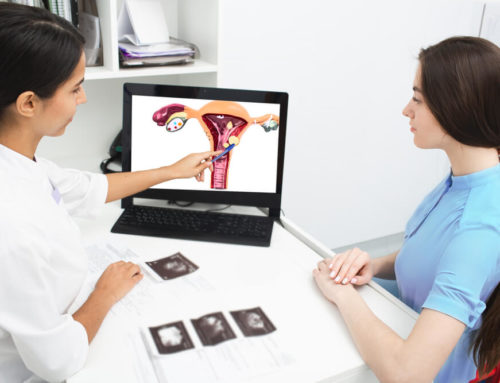If you are experiencing sharp pain in the pelvis when sitting for long periods, shifting in bed, or getting dressed, you may have pelvic girdle pain. Although uncomfortable, this sensation is very common among pregnant women.
In fact, pelvic pain during pregnancy is so widespread that the term “pregnancy-related pelvic girdle pain” applies to around 25 percent of expecting women. Fortunately, you do not have to endure the pain. In this comprehensive article, you will learn about the best tips to relieve sharp pelvic girdle pain.
Of course, if the pain is unbearable or you have additional questions related to your health, consult medical experts at Carreras Medical Center. Whether you have acute or chronic pelvic pain, we can help you.
That said, what are the best ways to relieve pelvic pain during pregnancy? Find out below.
What is Pelvic Girdle Pain?

Pregnancy affects a woman’s body and mental health in many ways. Besides experiencing tender breasts and frequent mood swings, many expecting mothers may experience pelvic girdle pain.
In short, pelvic girdle pain or (PGP) is a term used for all types of pelvic pain, whether it is an ache at the back of your pelvis or a sharp and stabbing feeling in your symphysis pubis. Although physiotherapists used to utilize terms such as sacroiliac (SI) joint dysfunction or symphysis pubis dysfunction (SPD), nowadays, the medical term “pelvic girdle pain” is preferred. Overall, pelvic girdle pain refers to pain in the entire pelvic region. Many pregnant women may experience PGP during pregnancy or after giving birth. This condition can come and go or be constant.
If you have any questions or concerns related to PGP or your health in general, request an appointment with our team of skilled professionals today.
Remember, pelvic pain during pregnancy is very common, but it is not untreatable. With expert help, you can relieve the symptoms and make sure you have an easy and stress-free pregnancy.
What Can Cause Pelvic Girdle Pain?
Pregnancy causes many changes in a woman’s body, and during this joyful time, the body releases the relaxin hormone. This hormone helps loosen the ligaments and expand the joints, so the baby grows properly. Due to this bodily change, pregnant women can experience muscle imbalances, contributing to pain.
However, relaxin is one of the reasons why you may feel pelvic pain during pregnancy. For instance, the woman may have had pre-existing injuries and imbalances that lead to pelvic pain. According to experts, the muscles in the back and the legs may become very tight and begin pulling on the pelvis. Simultaneously, the other muscles may become weaker. Experts claim that how a person moves, when they move, and how the individual feels about the movements can put additional stress on the pelvic area.
Pelvic pain during pregnancy can affect every aspect of your life. Here are some daily activities that can be hindered by pelvic girdle pain:
- Walking up or down the stairs
- Rolling over in bed
- Walking
- Standing on one leg
- Getting inside or out of a car
Additionally, there are many other reasons why you may feel pain in your pelvis. Here are the most common causes of pelvic girdle pain:
- High BMI (body mass)
- Injury (pre-existent or current)
- Trauma
- Weak pelvic floor muscles
- Rapid weight gain
- Arthritis
Pelvic Pain During Pregnancy
Pregnancy is one of the most common causes of pain in the pelvis. However, experts claim that there is no direct factor that can cause pelvic girdle pain. That being said, there are some factors that may increase the risk of experiencing this condition. These include:
- Increased BMI (being overweight)
- Previous births
- Ehlers-Danlos syndrome or joint hypermobility
- A personal or family history of low back pain or hip pain
- Prior injury to the pelvis or the back
Patients claim that pelvic girdle pain ranges from mild to severe. You may experience it in a couple of different areas in the pelvic region, including the groin, the pelvic floor, the side of the hip, the buttocks, the symphysis pubis, or the inner thigh. Pelvic pain during pregnancy can be very uncomfortable, and women usually feel it when getting out of bed or standing or sitting for a long time.
Ways to Relieve Pelvic Girdle Pain
Although the pain can range from mild to excruciating, there are some effective ways you can cope or even heal the pain in the pelvis. The best thing you can do when experiencing any type of pelvic pain is to consult with a physiotherapist or a chiropractor. If you are expecting a baby, make sure to talk to a professional who specializes in treating pregnant women.
The professional will ask you about your medical history and observe your movements. Next, you will be asked to do a few tests to check if you have problems with joint mobility, strength, and stability. According to experts, the way a woman feels is also important. For example, if she feels extreme pain, some tests might need to be skipped. In these cases, the professionals will have to go by the history.
Although pain in the pelvis is typically harmless, it can affect life quality, overall movement, and a mother’s ability to take care of the child (and herself). Hence, early diagnosis and proper treatment are essential for a speedy recovery. Based on the pain level, the reasons behind the pain, and physical ability, treatment plans vary from one patient to the next.
Here are the best ways to relieve chronic pelvic p
Pelvic Girdle Pain Exercises

Here are the best ways to relieve chronic pelvic pain:
Consider tissue work: Try a massage or another release technique to relax your tight muscles (especially in your lower back).
Do not sit on the floor with your legs crossed: Another way to reduce chronic pelvic pain is to use a stool when sitting.
Try pelvic floor and core strengthening exercises: Pelvic girdle pain exercises that involve strengthening the pelvic floor and the core may be essential. For instance, you can do clams, glute stretch, squats, pelvic presses, or Kegels. Make sure to consult a professional for the best pelvic girdle pain exercises tailored to your needs and mobility.
Modify your sleep and movement: You may need to get dressed while sitting down, take smaller steps when walking the dog, or get out of bed slowly. Sleeping with a soft pillow between the legs can also alleviate discomfort.
Always use correct posture (especially when sitting): Proper posture can help you alleviate pain in the pelvic region. Make sure to keep your back straight.
Refrain from lifting heavy weights: If you need to bend, do it with the hips and knees. Keep a natural curve in the back for less pain.
Some pregnant women may also find relief from the following treatment methods:
- Acupuncture
- Ice or heat to the pubic region
- Chiropractic massage or self-massage
When Should I Consult a Professional?
In most cases, pain in the pelvic region is harmless and common. For some patients, the pain goes away after giving birth.
However, if the symptoms persist or get worse, it may be best to talk to a professional for expert diagnosis and treatment. By receiving medical help, you will not only boost your health and life quality but also be the best mother you can be for your baby.
You do not need to suffer in silence. Book an appointment at Carreras Medical Center today.



